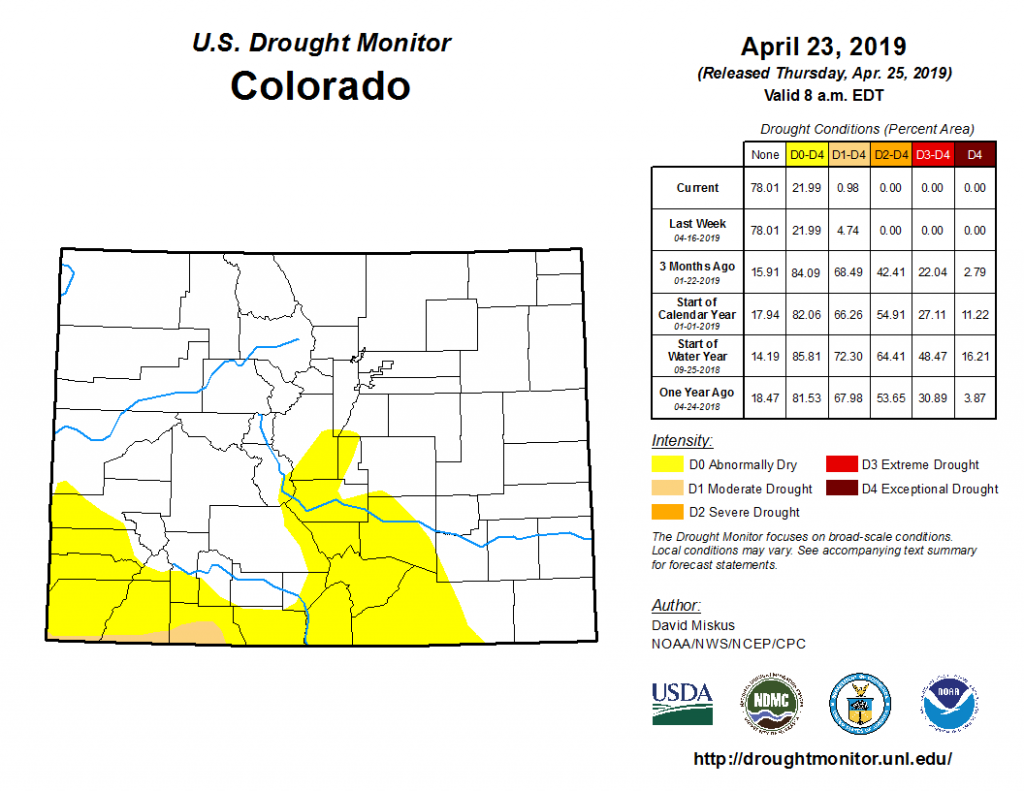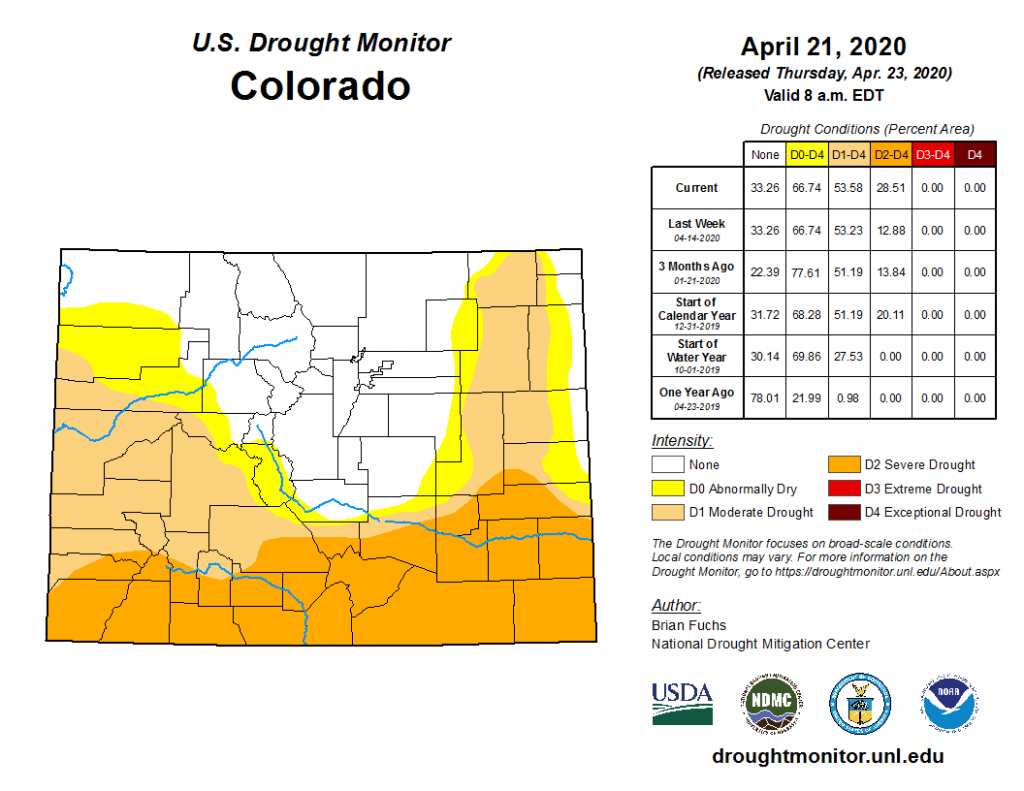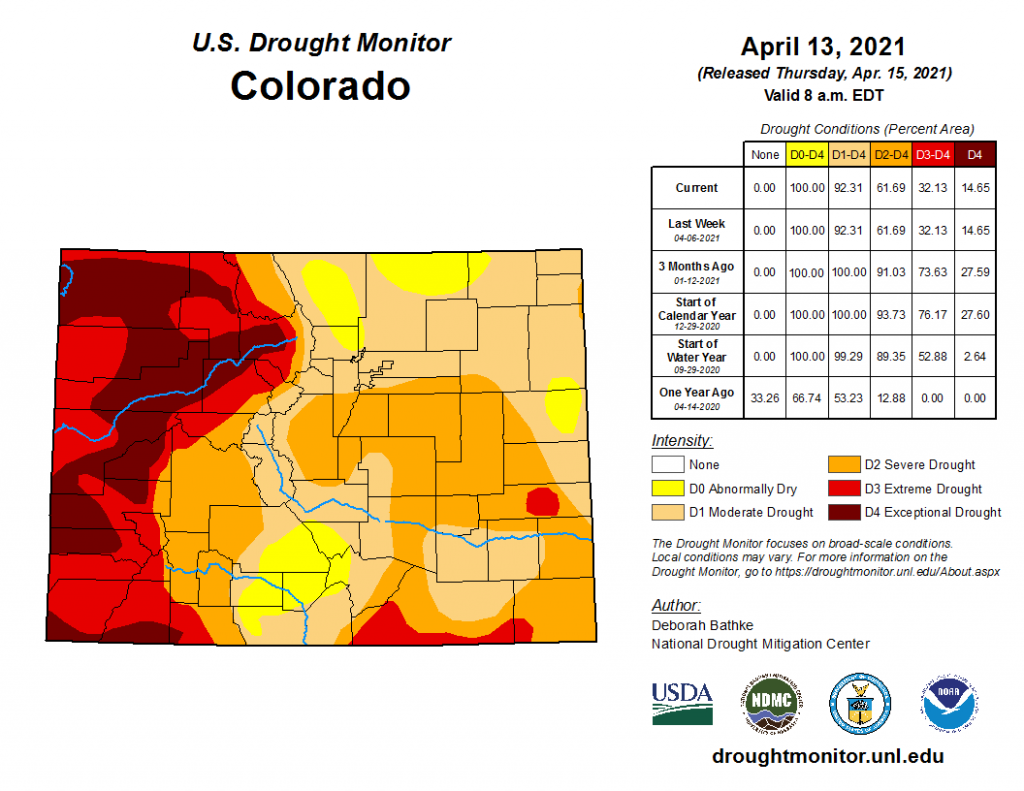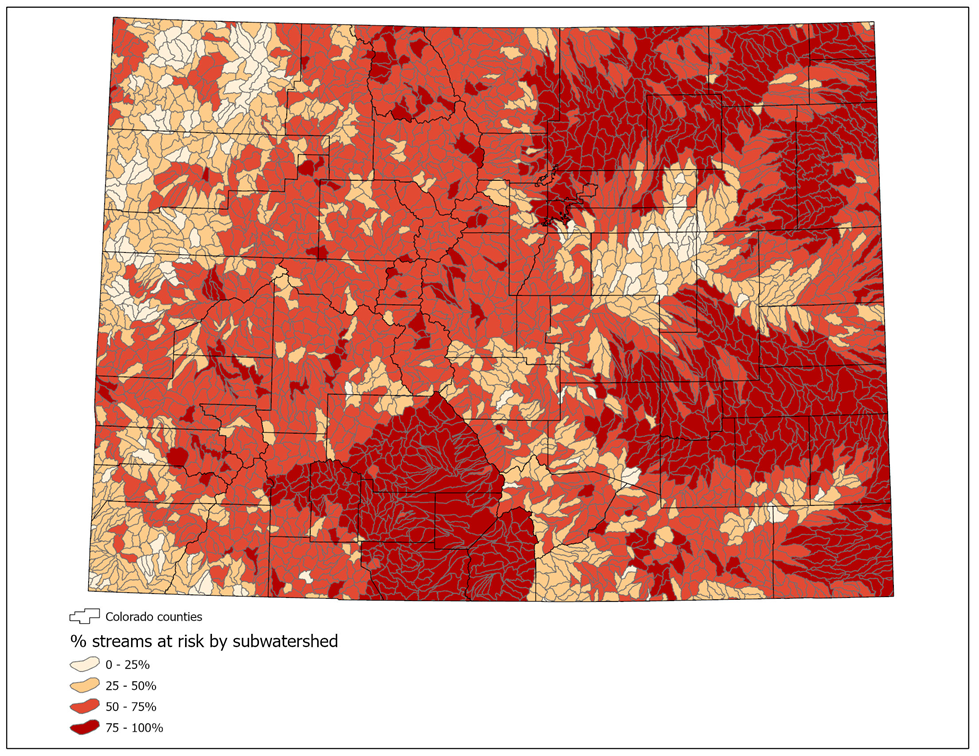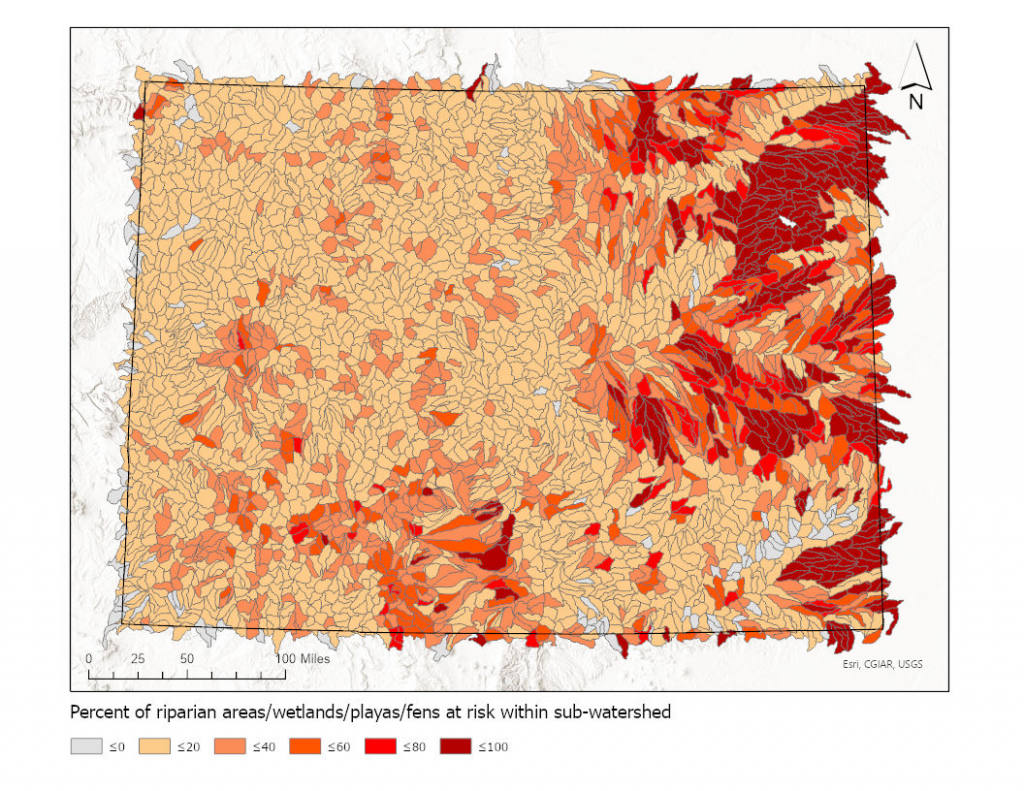Earth Day falls at a precarious time of year for Coloradans and our rivers. As spring arrives, many of us are returning to our favorite hiking trails, riverbanks, and camping spots for warm-weather recreation; others are enjoying the waning days of spring skiing or working off the winter rust and getting back on the river for some fishing.
But by mid-April, Coloradans will also stand on the precipice of fire season. As the water year passes its peak, we take stock of drought conditions across the state; and snowpack begins to melt and start its journey from the headwaters in the Rocky Mountains to our rivers.
The State of Our Rivers
This year, snowpack in the mountains — which provides 85-90% of the Colorado River’s flow — has peaked early and is below average, again. The “Millenium Drought” in the southwestern U.S. is now over 20 years old. On top of last year’s dry summer and fall, forecasters expect below average runoff, and low streamflows later this year.
Many of you may recall that last year, around this time, nearly a third of the state was drought-free. Unfortunately, all of Colorado is now experiencing abnormally dry conditions, with 32% classified as being in “extreme” or “exceptional drought.” This comes, too, on the heels of last year’s historic fire season that saw the three largest wildfires in state history.
Additionally, as of Friday, April 23 — the day after Earth Day — 25% or more of Colorado’s streams, rivers, and wetlands lost protection as the roll-back of federal Clean Water Act protection went into effect in Colorado. This Trump-era policy exposes Colorado’s streams and wetlands — the state’s sources of clean drinking water and wildlife habitat — to degradation as a result of construction activities. Without a state program to backstop the loss of federal protection, this policy threatens many iconic areas of Colorado. Until 4/23, Colorado had been the only state to avoid implementing the rule because a judge issued an order keeping the policy from going into effect; now, that has been overturned. The below maps, put together by Coalition partners The Nature Conservancy and Trout Unlimited, illustrate the extent of potential damages to our critical streams and wetlands.
The Good News
Poised on the brink of another drought-heavy summer and devastating roll-backs to clean water protection, Earth Day may feel more urgent this year. Indeed, this holiday was created to recognize and promote environmental protection; and although on this Earth Day we are confronting sobering drought maps, below-average streamflow predictions and threats to Colorado’s vital headwater streams and wetlands, we also have a lot to celebrate.
In the Colorado Recovery Act, Governor Jared Polis and Colorado House Speaker Alec Garnett allocated up to $75 million for funding river-projects, wildfire mitigation, and drought response. Earlier this week, the Legislature gathered for a committee hearing on HB21-1260, which would allocate an additional $20 million to the Colorado Water Conservation Board and grant-funded projects. And, sports-betting revenue continues to generate millions to fund Colorado’s Water Plan.
Where the Money Goes
Water plan funding allows for increased resilience to the types of climate change-induced drought we’re seeing statewide, and ensures that our rivers don’t dry up, agricultural heritage sustains, and flows are available to support world-renowned recreation.
You can explore our interactive Colorado Water Plan Grant Projects Map here, and learn about the types of projects these funds benefit. Some examples include:
- Updating agricultural infrastructure to replace aging equipment, improve efficiency and flows, prevent wasteful leakages, and restore natural environmental features.
- Providing municipalities funding to ensure safe and reliable drinking water for all.
- Sustaining Colorado’s rivers for recreational use, including flow restoration and river health projects which supports the robust ~$19 billion in economic activity that river-related recreation generates.
- Funding innovative water education conversations, workshops, and experiences statewide on issues such as sustaining agriculture, educating the next generation of water users, and protecting watershed health.
The CWCB is in the process of updating the Colorado Water Plan to include all of this and more. Do you have ideas for how the Water Plan can benefit your community? Share them here.
Taking Time to Reflect
Understanding the threats facing our rivers and the importance of well-funded, on-the-ground projects is crucial not only to our work here at Water for Colorado, but to our state and future generations of Coloradans.
But in the end:
“…We will conserve only what we love; we will love only what we understand; and we will understand only what we are taught” (Baba Dioum)
We feel the best way to truly understand Colorado’s rivers — and therefore protect them — is to experience them. So, this Earth Day, find a riverbank, cast a line, watch a sunset over a reservoir, or simply give thanks for the clean water that flows from your tap. These things are precious, and Earth Day reminds us of that.
Photo courtesy of Russ Schnitzer
Drought Maps courtesy of U.S. Drought Monitor
Clean Water Rule roll-back maps courtesy of Trout Unlimited and The Nature Conservancy
